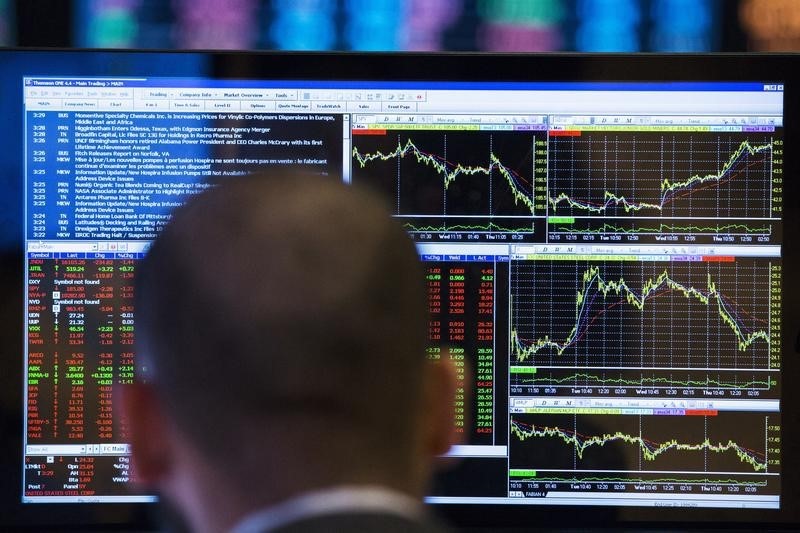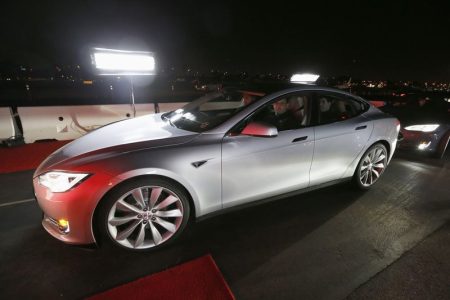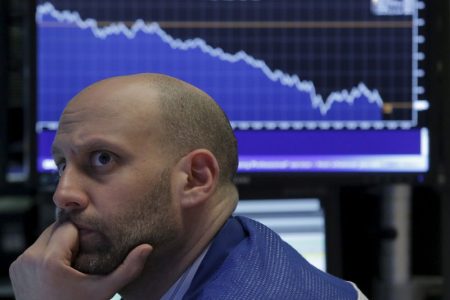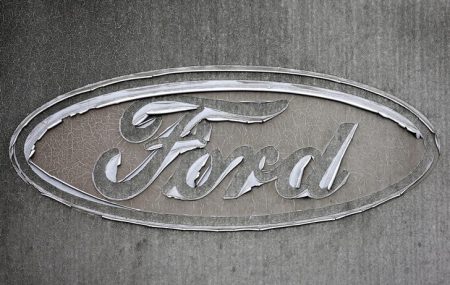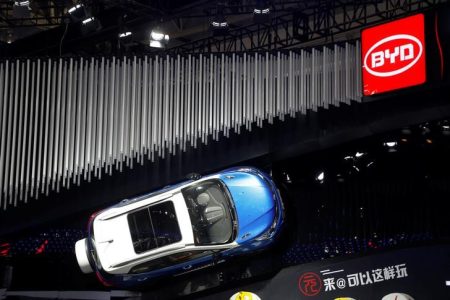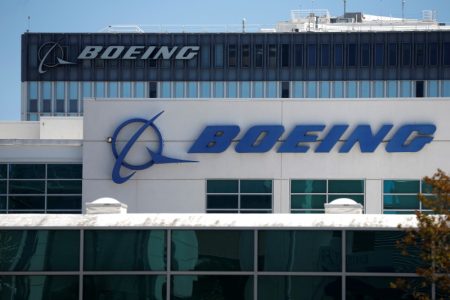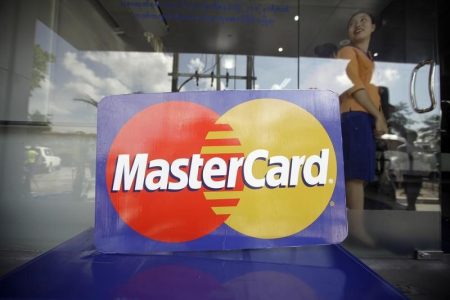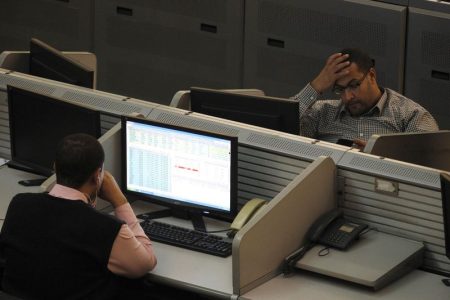© Reuters.
Celanese Corporation (NYSE:) has outlined a positive outlook for its Materials & Solutions (M&M) business in 2024, with significant growth expected in the first quarter and continuing throughout the year. The company’s fourth-quarter earnings call highlighted successful integration of SAP systems, which is anticipated to enhance operational efficiency and synergy. A favorable input cost environment is projected due to lower raw material costs, contributing to expected growth across both EM and M&M businesses. Celanese plans to focus on controlling factors within its reach amidst global economic uncertainties and is guiding earnings of $11 to $12, with a targeted $150 million in synergies from planned turnarounds.
Key Takeaways
- Celanese anticipates a substantial uplift in its M&M business starting in Q1 2024, with growth sustained throughout the year.
- Successful SAP integration is expected to deliver synergy and operational efficiency benefits.
- Positive input cost outlook for 2024 with lower raw material costs forecasted.
- The company aims for growth across EM and M&M businesses, contributing to EBIT growth.
- Celanese is managing amid global economic uncertainties, expecting lower demand patterns but noting improvements in China and the Americas.
- Planned turnarounds are on schedule, aiming to achieve $150 million in synergies.
- The company exceeded its synergy targets in the acetate tow business in 2023 and is confident in reaching the $150 million synergy goal for 2024.
- Nylon pricing stability and lower input costs are likely to positively influence 2024 earnings.
- A foundational earnings increase of $100 million is projected post Clear Lake expansion, with a goal of reaching $1.4 billion.
- Celanese expects a tax rate of around 9% for 2024 and beyond.
- Deleveraging to a 3x leverage level is a priority for capital use flexibility.
- Portfolio management strategies include integrating acquisitions and potential divestitures.
Company Outlook
- Stable margins anticipated in H1 2024 due to current inventory levels and nylon pricing.
- Acetyls earnings projected to rise by $100 million in 2024 from productivity gains post expansion.
- Commitment to generating free cash flow and deleveraging to reach a 3x leverage target.
- Minimum 25% EBITDA target in nylon operations.
- Acetyl chain margins remained robust in Q4 despite industry outages.
Bearish Highlights
- Global economic uncertainties may lead to lower demand patterns.
- No significant uptick in demand for consumer goods and electronics anticipated.
- Volume loss in the nylon market post M&M acquisition due to pricing decisions in 2022.
Bullish Highlights
- China’s new acetic acid capacity has been absorbed by the industry, indicating stable supply dynamics.
- Global supply chain strengths minimize potential impacts from Red Sea disruptions.
- Clear Lake expansion expected to drive growth and offset industry outages.
Misses
- Turnarounds planned for 2024 will affect earnings, with $50 million impacts in Q1 and another $50 million spread across subsequent quarters.
Q&A Highlights
- The company discussed the impact of productivity projects on EBITDA and incentive compensation.
- Growth in low single digits is expected, with the industry adjusting to new capacity in China.
- Celanese’s global supply chain is positioned to mitigate the effects of Red Sea disruptions.
- Lower auto inventories are not expected to significantly impact Celanese.
- M&M acquisition challenges are being addressed, with efforts to recover lost nylon volume.
- The Clear Lake expansion justifies based on productivity, with potential for higher returns in tight markets.
- No further planned turnarounds are expected for 2024 or early 2025.
Celanese’s earnings call reflects a strategic approach to growth and efficiency, with careful attention to market dynamics and operational improvements. The company’s focus on synergy, cost management, and global supply chain resilience positions it to navigate the uncertainties of the global economic landscape while pursuing its financial targets for 2024.
InvestingPro Insights
Celanese Corporation’s (CE) outlook is further illuminated by the real-time data and InvestingPro Tips, which offer a deeper dive into the company’s financial health and market position. With a market capitalization of $16.36 billion and a price-to-earnings (P/E) ratio of 8.3, Celanese appears undervalued when considering its near-term earnings growth. This is reinforced by a PEG ratio of 0.35 for the last twelve months as of Q3 2023, suggesting that the stock may be a good value based on expected growth rates.
InvestingPro Tips for Celanese indicate that the company has a history of consistent dividend growth, having raised its dividend for 14 consecutive years and maintained dividend payments for 20 consecutive years. This could appeal to income-focused investors seeking reliable dividend-paying stocks. Furthermore, the stock is trading near its 52-week high, with a price 94.54% of that peak, reflecting strong market confidence.
InvestingPro Data metrics show a robust revenue growth rate of 11.66% for the last twelve months as of Q3 2023, which aligns with the company’s positive outlook for its M&M business. Gross profit margins stand at 22.15%, indicating healthy profitability that could support the anticipated growth and operational efficiencies in 2024.
For readers interested in an in-depth analysis, there are additional InvestingPro Tips available that could provide further guidance on Celanese’s stock performance and potential investment opportunities. By using the coupon code PRONEWS24, users can get an additional 10% off a yearly or biyearly Pro and Pro+ subscription at InvestingPro, which includes more exclusive insights and tips to inform investment decisions.
Full transcript – Celanese (CE) Q4 2023:
Operator: Hello, and welcome to the Celanese Q4 2023 Earnings Call and Webcast. [Operator Instructions]. As a reminder, this conference is being recorded. It’s now my pleasure to turn the call over to Brandon Ayache, Vice President, Investor Relations. Please go ahead, Brandon.
Brandon Ayache: Thanks, Kevin. Welcome to the Celanese Corporation fourth quarter 2023 earnings conference call. My name is Brandon Ayache, Vice President of Investor Relations. And with me today on the call are Lori Ryerkerk, Chairman of the Board and Chief Executive Officer; Scott Richardson, Chief Operating Officer; and Chuck Kyrish, Chief Financial Officer. Celanese distributed its fourth quarter earnings release via Business Wire and posted prepared comments on our Investor Relations website yesterday afternoon. As a reminder, we’ll discuss non-GAAP financial measures today. You can find definitions of these measures as well as reconciliations to the comparable GAAP measures on our website. Today’s presentation will also include forward-looking statements. Please review the cautionary language regarding forward-looking statements which can be found at the end of both the press release and the prepared comments. Form 8-K reports containing all these materials have also been submitted to the SEC. With that, Kevin, let’s go ahead and open it up for questions.
Operator: [Operator Instructions]. Our first question today is from Josh Spector from UBS.
Joshua Spector: I was wondering if you could talk about your expectations for the M&M business in 2024 and kind of both near term and longer term. So in the first quarter, you seem to call out some improvement. I’m not really sure if that’s an assumption of market improvement or price cost improvement in earnings. So I wanted to clarify that. And then second, kind of how do you layer on the cost savings versus market and everything else where you expect to exit the year?
Lori Ryerkerk: Yes. Thanks for the question, Josh. If we look at first quarter, we do expect a really meaningful lift in M&M earnings in the first quarter and in fact, expect first quarter to be our highest quarterly EBITDA since the acquisition. I think that’s a number of things. The biggest factor is really starting to see the pull through of lower raw materials and lower fixed costs that we were generating this year but needed to move the volume through, that’s the higher cost materials through inventory. So I’d say that’s over half of the improvement we expect to see in the first quarter. We do expect recovery in auto versus the seasonal destocking that we experienced in the fourth quarter which was an issue for M&M. And then we start to see some of the initial fixed cost improvements from the footprint optimizations that we initiated last year and announced, although I would expect those to become more meaningful in the second half of the year and actually into next year as well. And so we do see evidence for that is we are seeing variable margin improving in January as we start to see that inventory pull through of lower raws and fixed costs. So we feel pretty confident in that. And for some key areas like Zytel, we saw that really bottom for fourth quarter, and we’re starting to see the recovery there. So I’d say we feel good about the first quarter and the meaningful uplift that we’ll have in M&M next year as well. Fundamentally, I would say we continue to see M&M as a really great business. All the reasons that we bought it are still there. We have just been a very difficult backdrop that has made it hard to get the full value of the synergies as well as some of the volume recovery and growth that we had counted on. I think if you looked at it today in what would be a more normal demand backdrop, we would find that M&M would be accretive.
Operator: Next question is coming from Kevin McCarthy from Vertical Research Partners.
Kevin McCarthy: Lori, I think you completed an SAP implementation just a few weeks ago. Can you comment on how that’s going so far, kind of level of integration across the company? And remind us of what the benefits might be as your TSAs roll off?
Lori Ryerkerk: Yes. Thanks for the question, Kevin. So we did do our SAP integration, the last version of that went live February 1. Maybe I should actually start out by thanking the over 1,600 people in the organization who have worked on the SAP integration, not full time, obviously, but had some role in it. And really, we often think about SAP integration as an IT effort, but it’s really a full business effort, including the finance, customer service, commercial businesses. It goes across everybody. And our folks have worked very hard to make this a success in only 15 months after we did the integration, which I think is fast by any standard. And then after they had already integrated the heritage Celanese businesses earlier last year onto the same SAP S/4 platform. So really excited to get this done. I would say this is probably the last major step in our integration. And will really help us now as we keep layering on the various processes to the platform, will really help us achieve the next level of synergy including getting rid of the TSA from DuPont (NYSE:), but also the synergies of people being able to work together on one platform, being able to have better access to the data et cetera. I’d say the integration went very smoothly. So supply chain production are all on the new platform running well. We’re able to take an order. We’re able to produce the chip in order and we’re able to get paid for an order. So that was the first order of business. And now we’re gearing up for our first month and close on the new platform. But again, I think it’s been remarkably smooth, great kudos to the extended team that made that happen. And I’d say so far on the integration, we’ve seen no surprises.
Kevin McCarthy: And then secondly, if I may, can you comment on your input cost outlook for 2024? And if those costs trended flat from here, what sort of benefit or tailwind might we expect for this year?
Lori Ryerkerk: So I would say, I mean, if you’re talking about raw material costs, I mean, certainly, raws have come down versus where we were a year ago. And who knows what will happen, but we also know that we are now pulling through the lower cost of raw and lower fixed costs that we built on. I would say ’24 is very much a year of being able to deliver on the actions that were taken in ’23. And so I think that is built in, obviously, to our outlook for the year. I think the important thing that we’re focused on, and we’ve talked about all year, is we want to continue to control what’s controllable. At Celanese, we’re really good at execution. I think you see that with what we’ve done so far. All of the projects we were able to take on at the same time. And so really, as we move into ’24, we see the benefits of that execution in ’23 as well as all the steps we have in ’24.
Operator: Our next question today is coming from Jeff Zekauskas from JPMorgan.
Jeffrey Zekauskas: You said that the synergies in the M&M business would be $150 million. Does that mean that the adjusted EBIT growth in M&M should be at least $150 million in 2024 year-over-year?
Lori Ryerkerk: Thanks, Jeff. No, because a number of factors there. So the synergies we’re expecting for this year is $150 million, only about 40% of those actually show up in M&M. The vast majority of them do show up in the EM profile, but some of them also show up in BU other and other areas.
Jeffrey Zekauskas: Maybe to reframe it a different way. Do you expect the M&M business to grow its EBIT exclusive of the synergies?
Lori Ryerkerk: Yes. So yes, thank you. I probably misunderstood your first question. We do expect growth across both our heritage EM businesses and a significant uplift in M&M businesses even exclusive of synergies for the year. I mean if you think about our outlook for the year of $11 to $12 and think about, we call out $100,000 — sorry, $100 million more in acetyls, the remainder of the uplift from the $9 we were at this year really comes from that integrated EM business.
Operator: Your next question today is coming from Mike Sison from Wells Fargo.
Michael Sison: Just wondering if you could help bridge us from 1Q to the remaining quarters? I know there seems to be a lot more headwinds in Q1, more of the synergies and everything, all the positives are coming in 2Q to 3Q. So when you think about going from $2 to a lot higher in the remaining three quarters and how does that sort of happen? And then, are the last three quarters basically equal in EPS is kind of the way to look at it?
Lori Ryerkerk: Yes. Thanks for the question, Mike. The way I look at it is, if we look at what we’re expecting to achieve in Q1, if you do the math, it says we need 300 to 340 in each of the remaining quarters. I would expect that to ramp up more in the second half, but I would still expect a pretty good ramp in the second quarter as well. So think about it this way. You don’t have the turnarounds in Q2 that you had in Q1. So that’s a $50 million lift. And then in EM, the vast majority of the additional lift in that quarter comes from EM and it’s really synergies and flow-through of lower cost inventory. It’s returning too. We have some seasonality in medical is always low in the first quarter, that should come back in the second quarter. Then in AC, you start to see the benefits of the project as we move through the second quarter. So I would say, we do expect a significant uplift in Q2 but even more uplift in Q3 and Q4. I would expect Q3 to be the highest quarter because we would expect some seasonality again in Q4.
Michael Sison: Got it. And then as a quick follow-up. Several companies have impaired assets from acquisitions over the last couple of years. Now I know M&M has underperformed, but are there any parts from M&M close to that in terms of impairment levels? And if so, what are the areas?
Scott Richardson: Yes, Mike. We’ll look at that when that time comes. We’ve taken a look at that at the EM level and have not seen markers on that, that would cause us at this point in time. I think that’s a possibility.
Operator: Next question is coming from Ghansham Panjabi from Baird.
Ghansham Panjabi: Lori, just on a high-level basis, what sort of global macroeconomic backdrop are you embedding as it relates to your guidance? Obviously, interest rates are still high. ISM, very mix globally, China, who knows. It still sounds that like there’s pockets of destocking, et cetera, on the durable goods side. How do you sort of factor all that in as it relates to the evolution in 2024?
Lori Ryerkerk: Yes. Look, I would say, at this stage, we are really focused on what we can control. So what we’ve assumed in our $11 to $12 guide is we see the kind of the diminishing of destocking. So we are assuming that we are getting to the destocking. We are not though assuming a really big uptick in demand or restocking. So I would say we’re still assuming kind of below normal demand patterns, but without the destocking. So we are — that is kind of the one upside that we’re assuming. That’s maybe a few percent at the most. And otherwise, it’s really — our outlook is really focused on what we can control. I would say if we look at the market, I mean, good news is, I think, as we’re starting ’24 although I’d like to say we’re back in normal demand patterns, we’re not. But look, we are starting to see some easing of some of the demand and competitive challenges we had. We called out, we’re seeing less movement in materials out of Asia into Europe. So that indicates to us that local demand is improving in China. And we see that. I would say in China, generally, we feel like demand for China consumption is approaching normal order patterns and normal levels. But the exports of goods out of China is still depressed, especially into Europe. So there’s still some downside on demand there. I think in the Americas, we’re seeing demand come back gradually. We saw some improvement in Industrial in the fourth quarter, but then we saw the reduction in auto, which was seasonal destocking. I expect that to come back in the first quarter. But again, not anticipating a huge uptick in demand there for consumer goods and electronics. In Europe, I’d say, similar to the U.S., but probably even a longer time frame and before we could return to demand. I mean, the other thing I would add though is, look, we are seeing some improvement in construction kind of normalizing. So that’s good, and that’s supported by a slight movement upward in terms of VAM pricing as well.
Ghansham Panjabi: Okay. Super helpful. And then for the second question, the outages in 2024 that seem front-end loaded, but would those bulk just sort of pull forward just given weaker demand? Or was that sort of in line with the original plan?
Lori Ryerkerk: No, I’d say it’s very much in line with the original plan. In fact, a little bit, we’ve pushed back a little out of ’23 into ’24 with the delay in the project at Clear Lake. But I would say these are planned turnarounds. These are turnarounds that occur on an every three years in the case of VAM, four years in case of methanol. And so very much as planned. And I would also say they’ve gone very well. We’ve gotten through all the major discovery work and no surprises. So feel like we’re on track to meet our plans around those turnarounds.
Operator: Your next question is coming from Aleksey Yefremov from KeyBanc Capital Markets.
Ryan Weis: This is Ryan on for Aleksey. The first question, I wanted to dig into a little bit on nylon pricing. I believe at least one peer of yours is out in the market, announcing some pricing. Are you seeing any momentum of it here? And can you just talk about what your expectations might be for the balance of the year?
Lori Ryerkerk: Yes. Look, nylon pricing varies a lot depending by region or by end use. But I would say, in general, we feel like we hit kind of the bottom in terms of variable margins. So it’s not just pricing that’s important, but it’s raws as well, so raws have come down. But I’d say, in general, we feel like we’re coming off the bottom. But let me hand it over to Scott, because I think he can give a bit more color here.
Scott Richardson: No. I think Lori hit it, Ryan. We are seeing a lot of stability, which is a really good thing. And as Lori mentioned, we’re starting to see the flow-through of variable costs. So margins are expanding in the nylon business, and we continue to work, as we said in previous quarters, to get back some of that share that had been lost prior to us closing the transaction. So we feel good about the trajectory as we work our way through this year of the nylon business.
Ryan Weis: Great. That’s very helpful. And then if I could just dig a little bit into the $150 million synergy target in your bridge for ’24. If there’s no demand improvement, demand kind of trend sideways from here. Do you still feel you’re confident in being able to deliver on that target?
Lori Ryerkerk: Yes. So I feel really confident in our ability to deliver on that $150 million. I think if you look at it, it really is in three buckets. The first really be the footprint optimization steps that we’ve taken at the end of this year, would start to show up in the bottom line next year. So that’s probably about $50 million in the year. We have the transition to the single SAP platform, which is happening now which gets us out of the TSA and we get other synergies from. And then we have cross-sell opportunities which have been identified this year, closed one this year, which will start to come online next year, and we’ll start to see the revenue return from. So I feel very confident about that $150 million of synergies for 2024.
Operator: Next question is coming from Frank Mitsch from Fermium Research.
Frank Mitsch: If I could just follow up, did you guys disclose what your M&M synergies were realized for 2023? Apologies if I missed that.
Lori Ryerkerk: I’m not sure if we disclose it or not, but we achieved $100 million in synergies in 2023. A little bit lower than we had anticipated earlier in the year, but still above what we had thought at the beginning of the year. And really, the reason for that was the volume related, just not seen volume recovery and some of the volume-related synergies not pulling through. But again, those synergies are there, they will just pull through at a later time as volumes recover.
Frank Mitsch: Got you. Understood. Understood. And if I could, a question on the acetyls chain. I know back in the ’21 Investor Day, back when you had acetate split out, the expectation was that it was going to be relatively flat to ’21 during 2023, at $245 million of EBIT. I suspect it might have been higher than that. Can you give us an idea as to how well that part of the business is performing and what outlook is?
Lori Ryerkerk: Yes. Look, acetate tow had a really good year this year as a result of the work we did last year to really reset how we contracted and how we manage that business. As you’ll recall, we pulled it in to be part of the acetyl chain to give us more flexibility and more optionality much like we do for the rest of our projects. So I would say we called out our target was to get to the $245 million at Investor Day. I would say we have meaningfully exceeded that target for the year. But again, I think the important thing here is we are just running as part of the chain. And that way, we stabilize the earnings of the entire acetyl chain, much like we do with say redispersible powders and other downstream derivatives. It simply gives us another outlet to pull acetic acid through the chain to make sure we can maximize value from the chain and again, stabilize earnings.
Operator: Your next question is coming from Vincent Andrews from Morgan Stanley.
Unidentified Analyst: This is [Turner Hendriks] on for Vincent. I was wondering if you could provide your updated view on auto builds for 2024 and the impact of slowing EV sales on product mix in EM and M&M? Also, how is opposed to China autos is the combined EM and M&M business?
Scott Richardson: Yes. Thanks, Turner. First, let me start with auto builds. I think the industry, most publications are projecting somewhere more or less flattish build. Our business tends to grow about 150 basis points to 200 basis points above build. So that’s what we’re baking into our current plan. When it comes to the mix of EVs, we’re largely across our EM portfolio, pretty agnostic to whether it’s an EV, an ICE vehicle or honestly, hybrids are the best. And we have about 20% more accessible content on a hybrid vehicle. So starting, particularly here in the U.S. to see more shifts to hybrid that tends to be a good thing for us overall. So really no impact if we see the mix impact here in the U.S. change away from EVs and move back to ICE or to hybrid. And from a China perspective, overall, if you kind of start at the corporate level, it’s about 1/4 of our overall sales. You bring that down into EM pretty similar. And our overall exposure is kind of around that range as well in terms of automotive in China.
Unidentified Analyst: Of the lower raw materials cost in nylon, how significant is this expected to be in 2024? And what’s the confidence that these will not get passed through to price?
Scott Richardson: I think, as Lori mentioned, we have a bucket of the lower variable and fixed cost we think is going to flow through the earnings. That could be the largest year-over-year benefit for us. A good chunk of that is in the nylon part of the M&M portfolio. So it has the ability to be a pretty significant driver of uplift year-over-year. A lot will depend upon what happens with raw materials as well as pricing in the second half of the year. We feel good about where things are in the first half of the year, given the amount of inventory that we have in the order book as we see it. Pricing, as we said earlier, has kind of bottomed out in nylon. So we don’t expect to see a lot of pricing impact downward from where it is today. So we feel very confident that the margins we’re seeing right now here, at least in the first half are here to stay.
Operator: Our next question is coming from David Begleiter from Deutsche Bank.
David Begleiter: Lori, can you talk to the foundational level of earnings in acetyls post the Clear Lake expansion coming on stream and given the step-up in acetate tow earnings we’ve seen this year?
Lori Ryerkerk: Yes, it’s pretty simple. I mean we’re — we said foundational level of earnings is $1.3 billion today. I think we’ve proved that in 2023 and what we’re pretty sub-foundational markets for most of the year. And next year, we expect — or this year, I should say, we expect that to increase by $100 million, which is really what we expect to get in productivity from the combination of Panther and our CCU project, Panther being, sorry, the Clear Lake acetic acid expansion.
David Begleiter: And have you assumed some normalized level of steal demand, what could our earnings power be?
Lori Ryerkerk: Well, I mean, look, we’ve had years where we were over $2 billion in acetyls. So I mean, when we have fly-ups and those sorts of things because the supply outages or sudden demand increases, it can be very high. But again, right now, we’re focused on what we can control. And so I would focus on that 1.4 level of foundational earnings.
David Begleiter: And one more thing. Just on the tax rate, is 9% a good rate going beyond 2024?
Chuck Kyrish: Hey, David, this is Chuck. For 2024, we do expect a really similar rate to ’23. I’d use 9% for now for that, and we will update you if that changes. Going forward, we feel like we’re in a good position. It will depend on the jurisdictional mix of our earnings. And we’ll update that each year, but we feel like we’re in a pretty good position where we are right now.
Operator: Our next question is coming from Arun Viswanathan from RBC.
Arun Viswanathan: Great. And apologies for that earlier. I guess, first off, just on the deleveraging trajectory. I know that the target obviously is to get to 3 turns as rapidly as possible. Maybe you can just walk us through the opportunity on free cash flow and how you expect to get to that returns? Is there any more opportunity to harvest a little bit more free cash flow to working capital? Or yes, maybe we can start with that.
Lori Ryerkerk: Yes. Let me ask Chuck to cover the details. But what I would say is, this year, like we were last year, we were very focused on generation of free cash flow and deleveraging. We’re very committed to maintaining that investment grade. And so we are anxious to delever to that 3x level so that we will have flexibility in our use of capital going forward and be able to move on with other opportunities in the company. But Chuck, let me you walk through the bucket.
Chuck Kyrish: Yes. Thanks. Thanks, Lori. Thanks, Arun. First, I want to just thank the global teams that we have that drove the record free cash results in ’23. That’s a lot of work by a lot of smart people. So I just want to salute that for your efforts. You know who you are out there. For ’24, let me give you a few key drivers that we’re seeing for free cash flow right now. If we start with earnings, if you take our EPS guide, that would translate into about $300 million of incremental net income, give or take. On working capital, our target for ’24 is $100 million to $150 million benefit for the year. This compares with a little over $500 million cash benefit for the year in ’23. So not as much working capital benefit year-over-year, but we’re still striving for working capital benefit within the year. And this driver could change depending on how demand shapes up across ’24, of course, and kind of how earnings and synergies ramp. And we do know CapEx should be lower year-over-year by $100 million to $150 million as we cycle out of a lot of large projects. Those are the key drivers. There are some other puts and takes in that, that we need to refine as the year goes on like cash tax and cost to achieve synergies. But I would focus on key drivers right now in ’24. And as you know, we are really focused on converting our earnings into cash flow, deleveraging the balance sheet. We think we’re going to finish this year much closer to our 3x target and we expect to finish to our 3x target in 2025.
Arun Viswanathan: Great. And then I just have one quick follow-up. Just thinking about the portfolio as it stands now. Obviously, you’ve gone through some changes within the food ingredients and integrating M&M. Is there anything else on the horizon that we should be thinking about as far as portfolio management or potential divestitures or anything along those lines?
Lori Ryerkerk: Yes. Thanks, Arun. Look, we still have a ways to go with the acquisition of M&M and the cleanup activities. I think as we get through S/4, this is a big milestone for us and will allow us to find other opportunities to better run these businesses together. So that is kind of first and foremost, our focus. But I would also say, as it comes to divestitures, we will, as we’ve always been, be opportunistic and smart about it. And if we see the opportunity to divest something in the company that is it worth that more to someone else than it is to us, we will, of course, pursue that.
Operator: Next question today is coming from Hassan Ahmed from Alembic Global.
Hassan Ahmed: A two-part question on the acetyl chain to start with. Your margins in Q4 sequentially were flat to even slightly up, which was a bit surprise, keeping in mind what the acetic acid to methanol spread did. So part one of the question is how did you achieve that margin expansion? And then as I sort of sit there and think about 2023 for acetic, there seems to have been quite a few industry outages, which I would imagine you guys benefited from. So as you, guys, sort of gave us that bridge to 2024 earnings, you’re talking about a $50 million to $75 million headwind from one-offs. Is the positive impact of sort of those outages baked into that as well?
Scott Richardson: Yes. Thanks for the question, Hassan. Let me start by really kind of committing the team for continuing to flex this integrated value chain model. What you saw in the fourth quarter is a combination of the team flexing production as much as possible given some of the outages that were unexpected in the Americas and flexing that to the highest value end uses that we saw and to our teams in the field and the manufacturing environment really pulling costs down as much as possible, given the economic environment that we’re in. As you alluded to, some of those reverse out as we move our way into next year. But I think we do expect the markets to grow kind of in that global GDP level in the acetyl value chain, which will give us some potential offset to any kind of industry outages that may or may not happen. We are expecting utilization to remain in kind of the 85% to 90% range. So much like you saw last year, if you see some dislocation in markets, we tend to be able to benefit from that in the short term.
Hassan Ahmed: Very helpful, Scott. And as a follow-up on the sort of M&M side of things. You, guys, obviously shut down some nylon capacity. So if you could sort of talk a bit about what you’re seeing in terms of near- to medium-term supply-demand fundamentals on nylon. And part and parcel with that, in the last quarter, you guys talked about maximizing your make versus buy decision? What’s the thought process in light of what you’re seeing in terms of nylon supply-demand fundamentals on the make versus buy as well?
Scott Richardson: Our focus is creating a contemporary operating model for nylon. Not relying on low-cost raw materials to create value. But controlling where that value creation comes from. And for us, that really comes from creating compounds that are unique for our customers and maximizing that part of the value chain as much as possible. We have the ability, given where the dynamics are to make some of those make first buy decisions, as you mentioned earlier, Hassan. And as we do that, we’re going to be focused, much like we do in the acetyl chain, on what is the lowest cost to supply those compounds so we can remain competitive. But fundamentally, we are working to create a business model here that is minimum of 25% EBITDA in any economic environment. And so the first steps of that to take controllable costs out with the shutdown of our production capacity in Europe and then maximize our low-cost capacities that we have here in the Americas as well as purchases in Asia.
Operator: Next question is coming from Laurence Alexander from Jefferies.
Laurence Alexander: Can you clarify the EBITDA impact from incentive comp and working capital flows in 2023 and therefore, the bridge to 2024?
Lori Ryerkerk: Sorry, I was just having a little trouble hearing your question. In 2023, we reduced inventory by about $450 million. Of that, 80% came from EM. The rest came from AC. And what I would say, it was punitive to our EBIT for the year. At the same time, our businesses did a really great job offsetting the impacts of that as well as minimizing it and making sure we took some reductions in raw materials and intermediates and things that didn’t have as much of an EBITDA impact.
Laurence Alexander: Okay. Great. And just in terms of the incentive comp 2024 versus 2023. Is it an incremental headwind?
Lori Ryerkerk: I would — for the inventory reductions, which will be less this year, I would expect a similar level of EBITDA hit for that. So I don’t see that as being a year-on-year headwind.
Scott Richardson: Yes. And on incentive comp, Laurence, we don’t — I wouldn’t expect it to be material year-over-year.
Operator: Your next question is coming from Salvator Tiano from Bank of America.
Salvator Tiano: Thank you very much. So first question I wanted to ask on the acetyl chain. It seems like you’re assuming acetic acid and VAM and acetyl spreads probably will be flat year-on-year. So the growth will come from the Clear Lake expansion. What are you seeing on the supplies because it feels that the supply comes online in China in 2024, could this actually be an additional risk? And if the acid prices do come down, that is not part of the $11 to $12 guidance?
Scott Richardson: Yes. So thanks for your question. Let me try to answer it. You put out on us a few times here. Let me first kind of hit what Lori talked about earlier around the $100 million really coming through productivity on a year-over-year basis. As we mentioned earlier on the call, we would expect to see growth more in line with GDP, so low single digits. There, given what we’re seeing kind of right now in the construction sector, as Lori talked about earlier. That’s kind of going to be offset by some of the outages that we had earlier in the year. So I would not focus too much on changes in utilization. The industry has more or less kind of already absorbed that new capacity that has come online in China. So really think about the year-over-year lift coming from our productivity projects.
Lori Ryerkerk: And maybe if I could add just a little bit more color on that. If you actually look at, say, China acid pricing through the year, it was actually very steady throughout the year, except for a very short lift that we saw at the end of Q3 based on some outages in the industry. But that was very short-lived and really went away as we went through, got into the fourth quarter. So I would say we saw capacity come online. Last year as well, more capacity last year than it’s going to come online, and that’s already been absorbed, and we’re still at that 85% to 90% utilization. So while there may be some additions in ’24, it is much smaller than we experienced in ’23, and we didn’t really see the ’23 capacity adds have a long-term impact on pricing.
Salvator Tiano: Okay. Perfect. And for my follow-up, I want to ask a little bit about the Red Sea disruptions and assuming that may disrupt Asia to Europe trade close, how could this impact Celanese these earnings, especially in Europe? I guess, I could see this being posted in regard to lower nylon or POM imports. But at the same time, it could affect the imports of some of the raw material sides. So what would be the impact, you think?
Lori Ryerkerk: Yes, I’m not sure that there’ll be any benefit at this point in time. What I would say though, this is a good reflection of the value of our global supply chain for all of our businesses because despite the challenges in the Red Sea and the Suez, there has been a lengthening of supply chain for many producers and suppliers. There has also been — that’s added some cost for some of the folks trying to get into Europe, in particular, from Asia. But because of our global supply chain, we are able to provide from other parts of the world. So we’re not seeing the increased cost. What I’d say is most of the effect we’ve seen, I’d say, is temporary as people adjust to the new lengthened global supply chain. So we’re not really baking in any uplift or loss at this point from the issues in the Suez.
Operator: Our next question today is coming from Matthew Blair from Tudor, Pickering, Holt.
Matthew Blair: So the automakers have been talking about running a lot leaner going forward and keeping their inventories low and supporting their margins rather than the previous way of just overproducing and then putting everything on sale. And I was wondering, how do you see the shift from Celanese’s perspective? Is this potentially exciting to you because perhaps it could result in higher margins for Celanese? Or is potentially a concern because it might have some impact on our overall auto volumes?
Scott Richardson: We don’t see it as being really a material impact for us. I mean if you think about carrying lower inventories, it’s largely already kind of been baked into where things are right now. And honestly, it just creates, I think, less kind of ups and downs from what we’ve historically seen because you get restocking, destocking to not have that in the future, certainly would not be a bad thing for us at all. So — but overall, we don’t see really any significant impact.
Matthew Blair: Sounds good. And then I just want to clarify on the Clear Lake acetic acid expansion, this $100 million in productivity. Is this also your estimate of like the long-run EBITDA potential for this expansion? Or what do you think it could generate in a more normalized environment?
Lori Ryerkerk: Well, remember, we justified the expansion of Clear Lake acid and the CCU project, really, well, the Clear Lake just on productivity, so catalyst savings, energy savings, less freight by shipping out of the U.S. versus Asia to Europe, so those sorts of things. So that $100 million, I would say, is intact. It also tied to the CCU project, which again was a very low-cost project that really was initially put in place just to generate additional methanol for use at our Clear Lake site. Now we think there’ll be more value from that as we go forward as we see what customer demand is for lower carbon products, but we probably won’t have a good feel for that until later in the year and into 2025. If we were to get in a situation like we saw in ’21 or even in ’18, where a lot of supply disruption, rapid demand growth obviously, we could use Clear Lake for a source of acetic acid production into those very tight markets, which would greatly increase the return. But again, we’re not counting on that. We justified the project based on productivity. And if there is a flywheel if we get into periods of higher demand and margins.
Scott Richardson: Yes, Mike, I’d add one of the other benefits in the near term for us is that adds redundancy to our U.S. Gulf Coast network. And we called out in the prepared comments that we had some unexpected outages that would have more or less been offset had we had the new acetic acid unit up and operating. So it gives us that redundancy to ensure that some of the near-term blips that we’ve had in our U.S. Gulf Coast network in the past, we’re able to manage those better in the future.
Operator: Your next question is coming from John Roberts from Mizuho.
John Roberts: Back to Sal’s question, Red Sea and the Suez. Do you think the reduced Asia POM exports into Europe or coincident with the Red Sea incident here? It seems odd that China would be improving before Lunar New Year. And I think Japan just slipped back into recession. So we’re not hearing from other companies about demand picking up in Asia.
Lori Ryerkerk: In China, in Asia, which is reducing the amount of material that is having to move out of Asia. So I think subsequently, we may see that impact continue because of the Red Sea, but I really think it does demonstrate a strengthening of the market in Asia.
John Roberts: And then secondly, I’m not sure we heard earlier about the stocking cycle in Vamac rubber. Is it harder to track customer inventory in that product area?
Lori Ryerkerk: Look, Vamac is a little unique in that it is a highly differentiated, high-value product, primarily used in auto, it has some unique attributes, and we have some unique marketing positions. So it’s not provided by a lot of people. I would say when we — it was one of the reasons actually that we were so interested in the M&M equity that was one of the product lines that we thought would be highly complementary to Santoprene, and we back have found for future projects is highly complementary. But I would also say, due to reliability issues, it was very — in high demand, it was very constrained in ’21 and ’22. So one of the things that we focused on since the acquisition is resolving those reliability issues and increasing the production, which we were successful at doing. I would say mid-’23 when we were able to get our volumes up, we saw customers buying up everything they could because they were used to have it go toward. And so as we move to the fourth quarter, they realized supply stability was better, and we went back to what I think will be — well, we had a low point in fourth quarter. And then I think this year, as we go forward, we’ll see more normal demand patterns versus kind of the high highs we saw a second third quarter and a low that we saw in the fourth quarter.
Operator: Our next question is coming from Jaideep Pandya from On Field Research.
Jaideep Pandya: The first question is on M&M. If I go back to the — did the acquisition, half of this business is sort of nylons and then half of this business is China and Asia. So when we look at the current level of earnings versus what you thought $900 million, where is the exact shortfall regionally and product-wise? Is this in Asia? Or is it actually Europe, U.S. country? Is this a nylons or is this outside nylon? That’s my first question. The question really is around the acetic value chain. This year, potentially, you will still have some pressure because of demand versus supply upstream in acetic acid. What is your strategy with regards to VAE and DPP in the middle stream or downstream? Are you going to push to gain more market share? Or are you happy to sort of have a more upstream position?
Lori Ryerkerk: Yes. So maybe talk about the M&M acquisition. I mean you’re right, a significant amount is nylon, but some of it is high temperature in nylon, more specialized nylons. I think where we have seen the challenges since the acquisition in nylon is really around more standard grade and volumes that were lost in 2022 due to pricing decisions that were made at that time. I think the teams have done a really good job starting to get some of that back, which is important, and that will continue to happen again and will continue to see improvement in variable margin as we flow through what now has been reduced with lower cost raws and lower fixed costs. So I don’t know that it was really — while it was around nylon, I wouldn’t say it was specific to any one region or not. I mean DuPont was very strong in Asia, outside of China, which has actually been a pretty stable market this year. They were stronger in the U.S., which for auto has been stronger. They weren’t as strong in Europe. Celanese was stronger there. So I would say it’s not specific to any one region, but it’s been more of a challenge specific to the volume loss that happened in 2022 and the steps that we have taken to start recovering that volume in a fairly low demand environment. And your second question around acetic acid, maybe I’ll ask Scott take that.
Scott Richardson: Yes. Very similar to what we saw last year. The current dynamics that we’re seeing in the market globally, it makes a lot more sense for us to be pushing product downstream just given where some of the pricing and margin is on the upstream, and VAE has been a heavy lift for us from an earnings standpoint along with our redispersable powders as well as the acetate tow business as we talked about. And the current dynamics, it just makes a lot of sense for us to continue to maximize production as far downstream as we can. Kevin, we’ll make the next question.
Operator: Certainly, our final question today is coming from Patrick Cunningham from Citi.
Patrick Cunningham: Maybe just a clarification. On the $50 million turnaround impacts, are the large majority isolated in the first quarter? And do you have any other planned turnarounds to be up in 2024 or early 2025?
Lori Ryerkerk: Thanks, Patrick. So the $50 million is in the first quarter. There — we’re up about $50 million from last year. So through the remainder of the year, there’s probably another $50 million spread across the remainder of three quarters. But that’s consistent with last year. So incremental to ’23 it’s $50 million and I would think of it all occurring in the first quarter.
Operator: We have reached the end of our question-and-answer session. I’d like to turn the floor back over to management for any further or closing comments.
Brandon Ayache: Thanks, everyone. We’d like to thank everyone for joining. As always, we’re around after the call if you have any follow-up questions at all, Kevin, please go ahead and close out the call.
Operator: Thank you. That does conclude today’s teleconference and webcast. You may disconnect your line at this time, and have a wonderful day. We thank you for your participation today.
This article was generated with the support of AI and reviewed by an editor. For more information see our T&C.
Read the full article here





